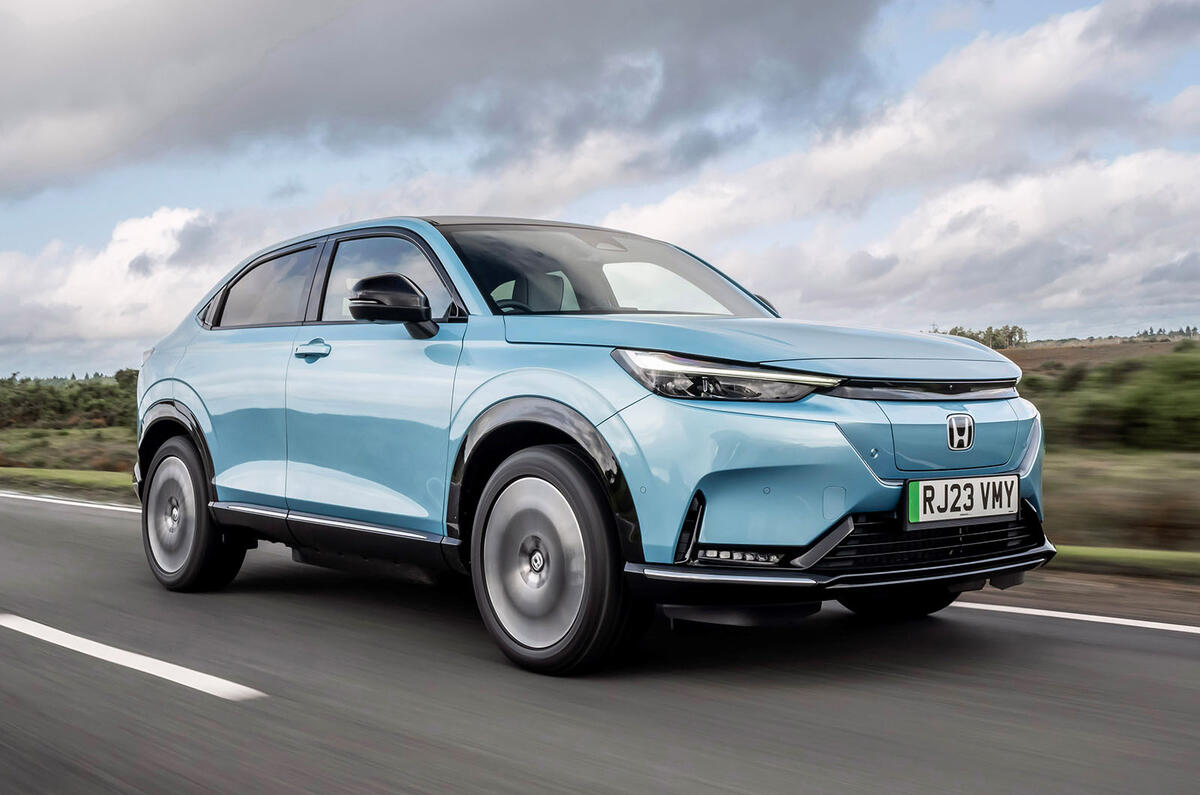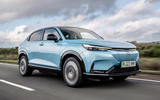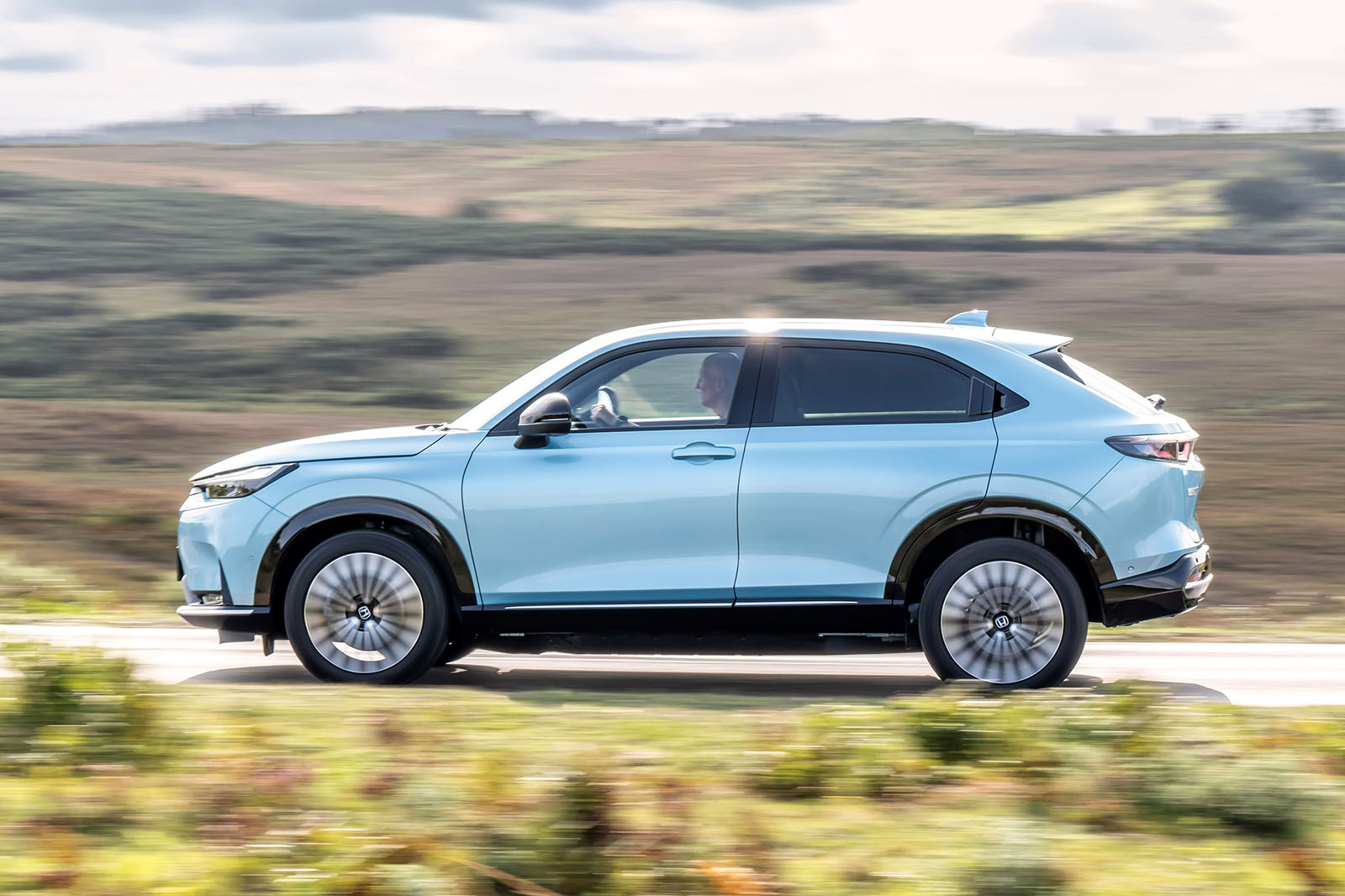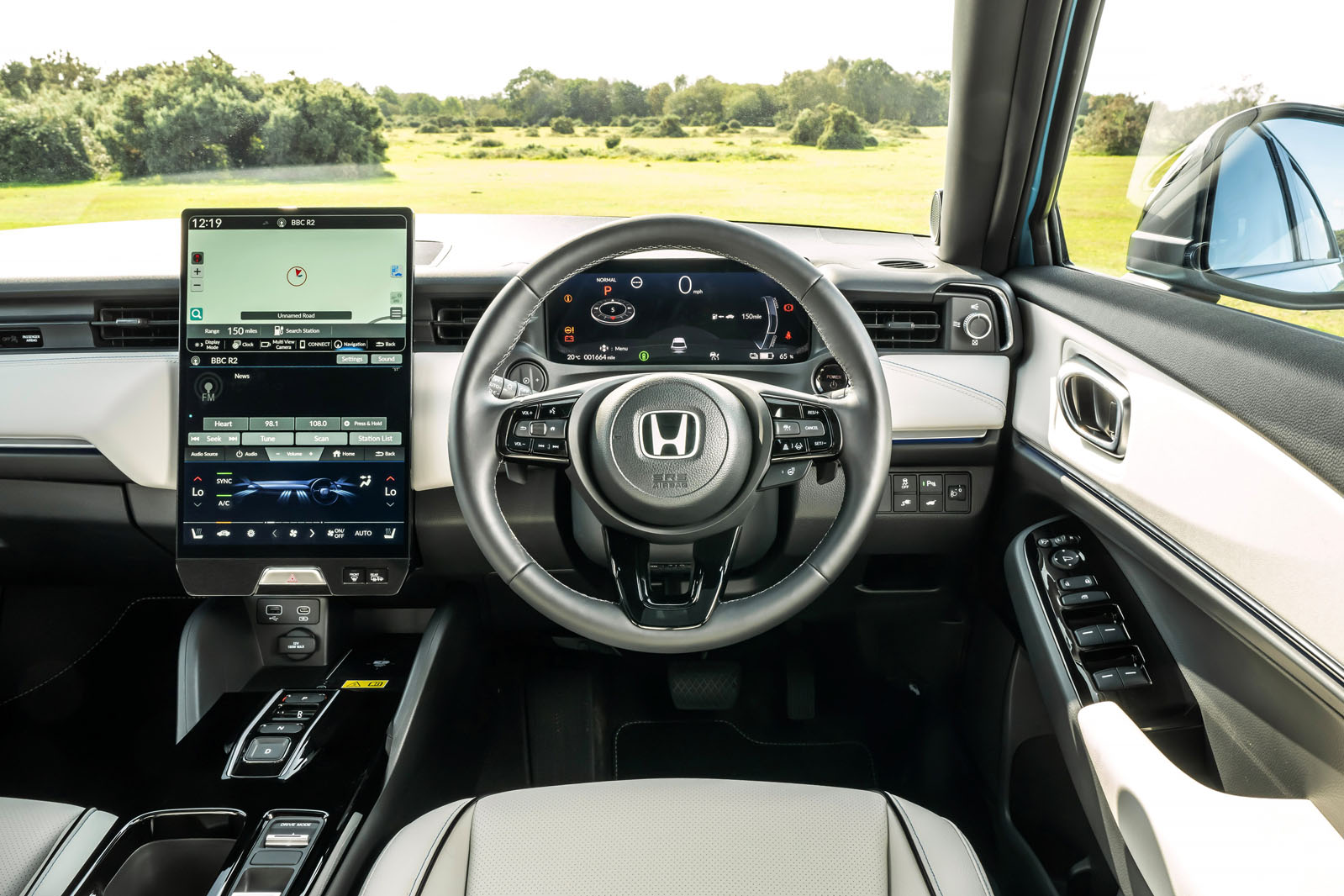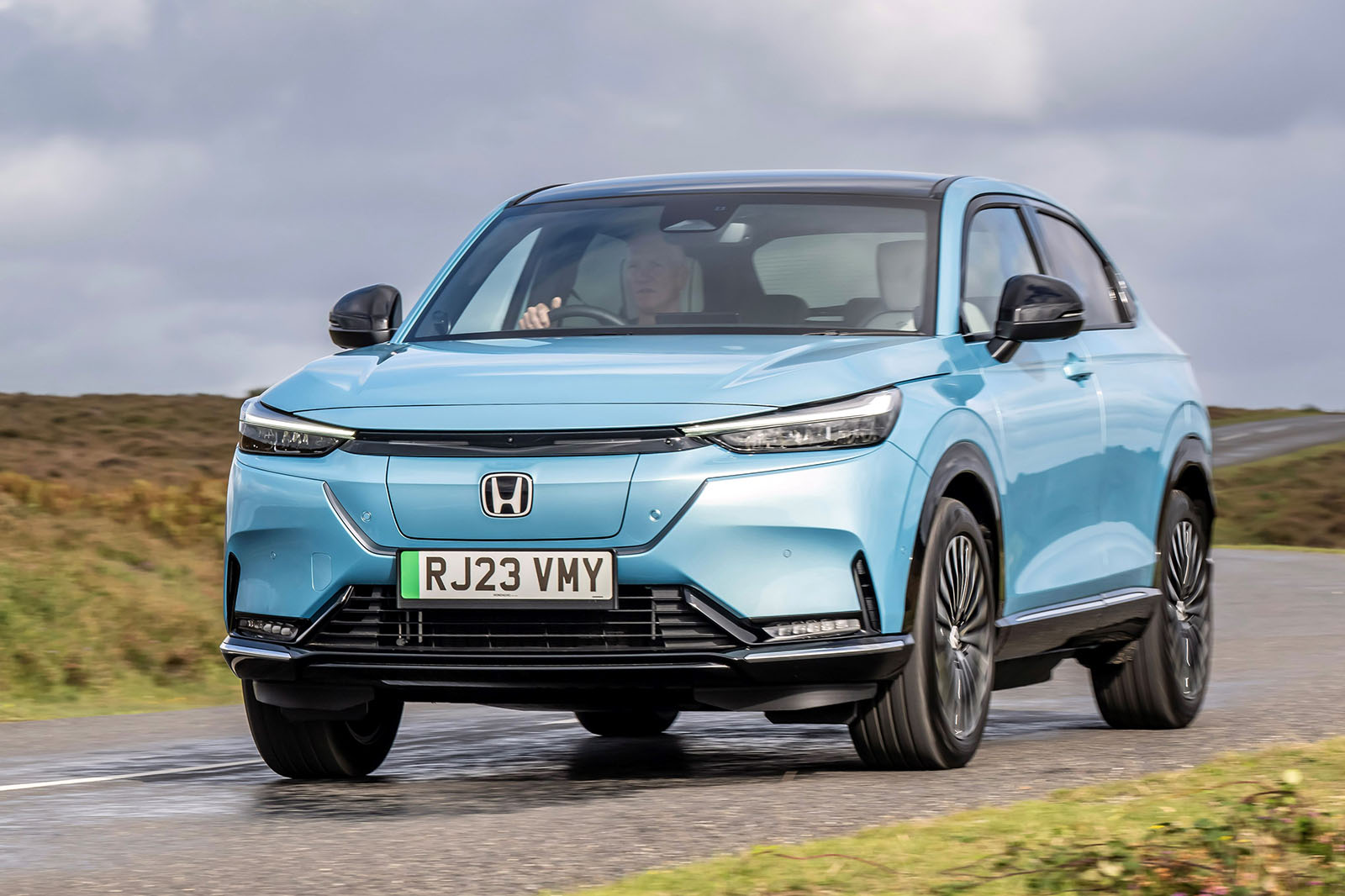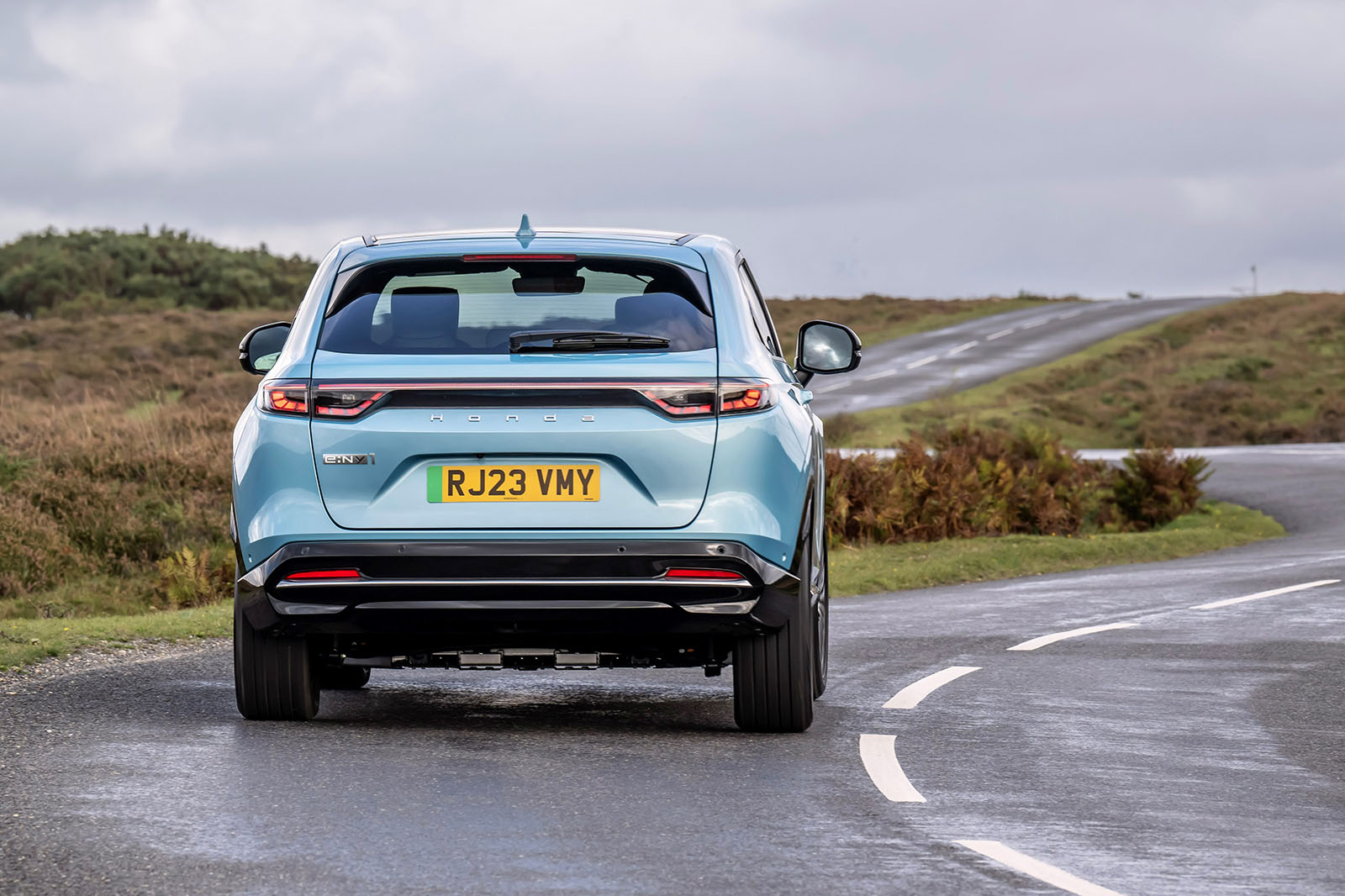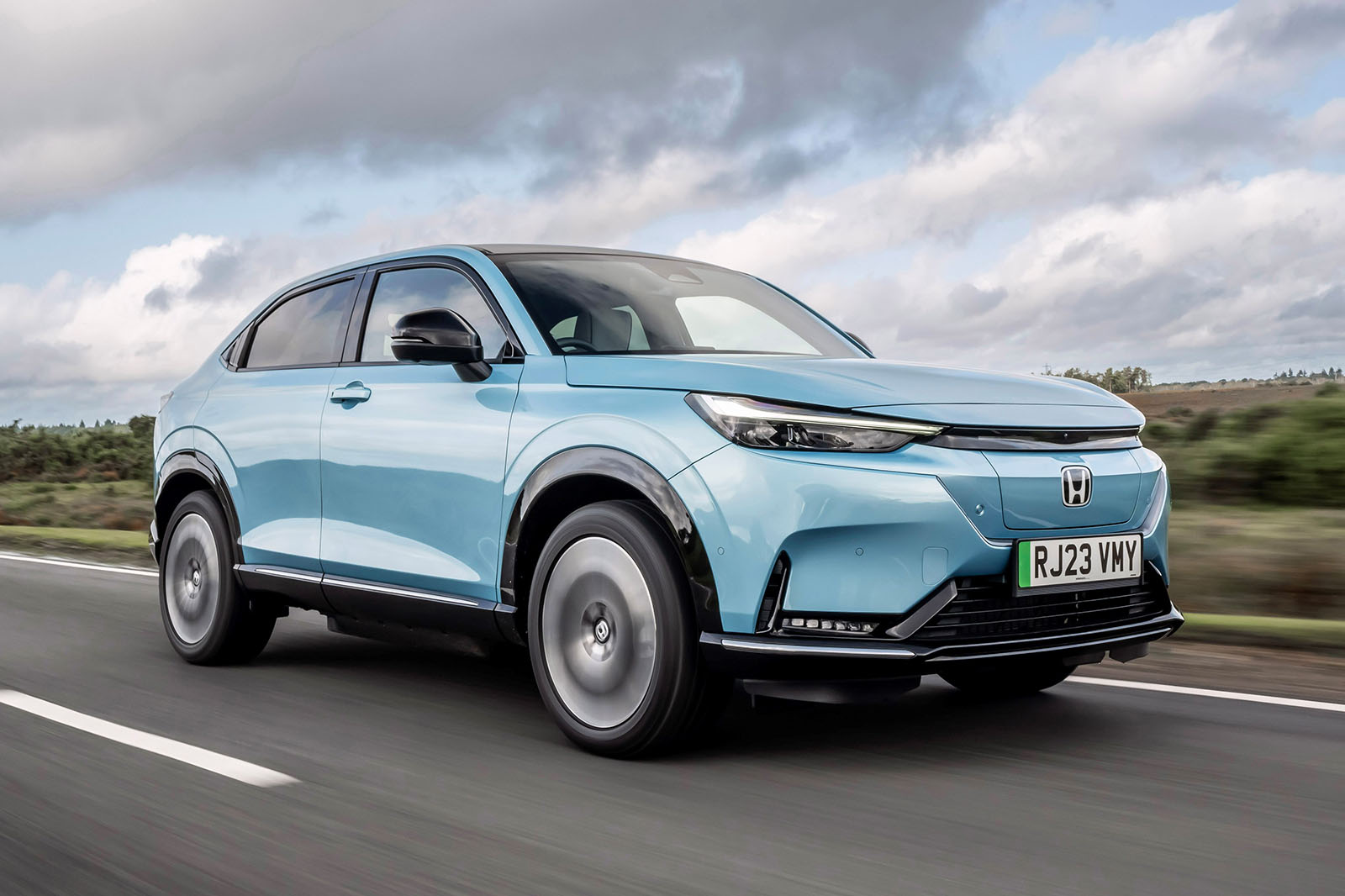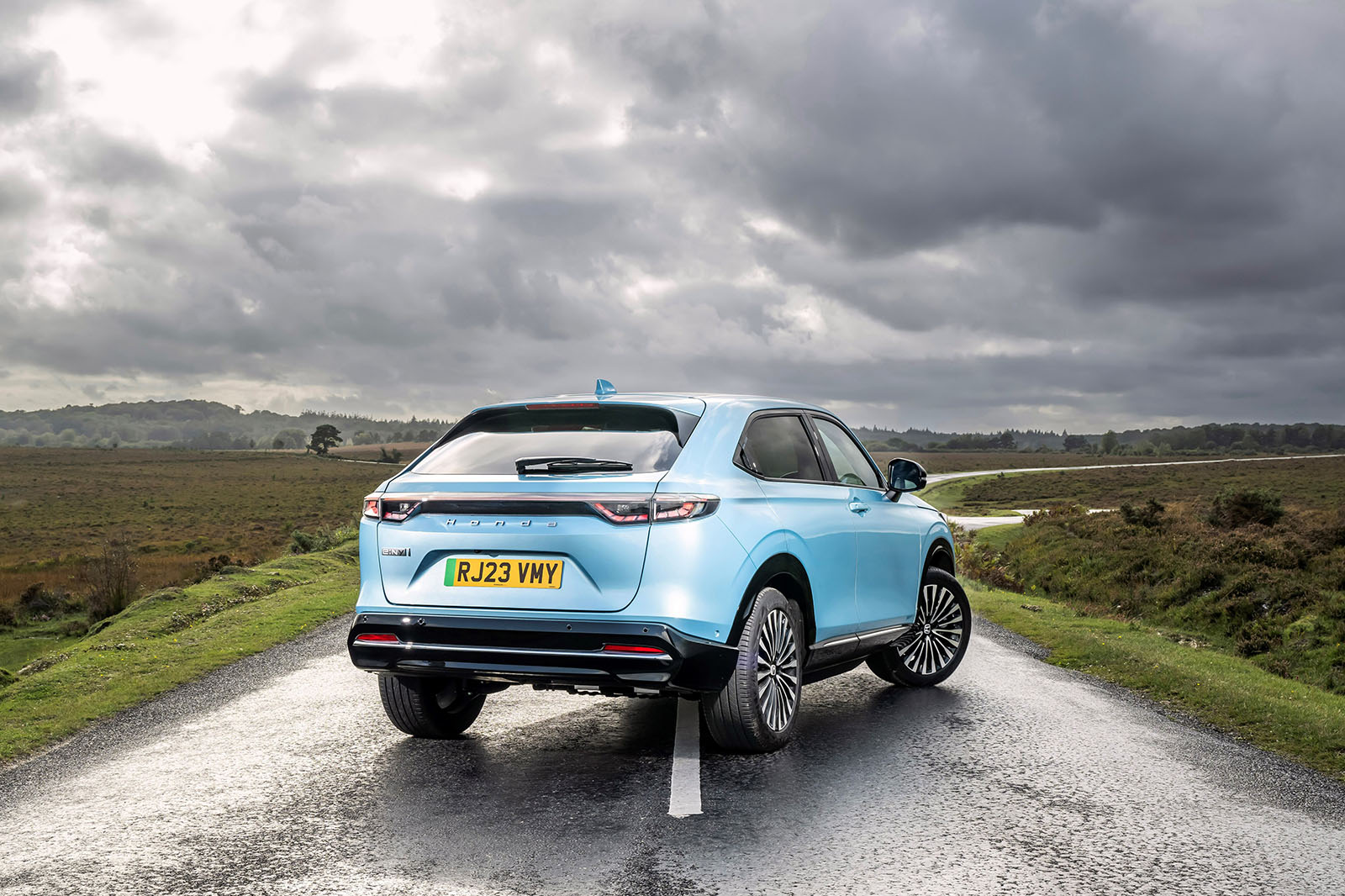Honda set out confidently with its first electric car, the likeable Honda e; but now that it’s taking a second swing, it’s getting a little bit more sensible.
The Honda e:Ny1 is the all-electric compact SUV that, it’s hoped, will make a more commercially transformative prospect for Honda’s European sales volumes than its zero-emissions sibling has so far proven. Roughly the same size as the hybrid-powered HR-V, it uses a front-mounted drive motor and front wheel drive. This is our first taste of one on UK roads.
Honda’s high hopes for the e:Ny1 are vital for its zero-emission goals. As a result of the zero-emission mandate, the brand expects 22% of its registrations by the end of 2024 to consist of e:Ny1 sales, which is equivalent to around 7500 cars.
The firm has selected quite a congested segment in which to launch the car. By Honda’s own reckoning, the e:Ny1 will directly face off with the likes of the Toyota bZ4X, Renault Mégane E-Tech, Volkswagen ID 4 and even the extremely popular Tesla Model Y. As the first car in Europe based on the firm’s e:N Architecture F platform, it will share its new modular platform with larger all-electric Hondas still to come.
Honda positions the e:Ny1 as an acceptable and comfortable stepping stone into BEV ownership for both existing customers and those who are new to the brand. It looks like it will become just that sooner rather than later, too, given that Rebecca Adamson, Honda UK’s head of automobile, has said there would be no direct successor to the Honda E urban hatchback.

Honda e:Ny1
TECHNICAL SPECS



